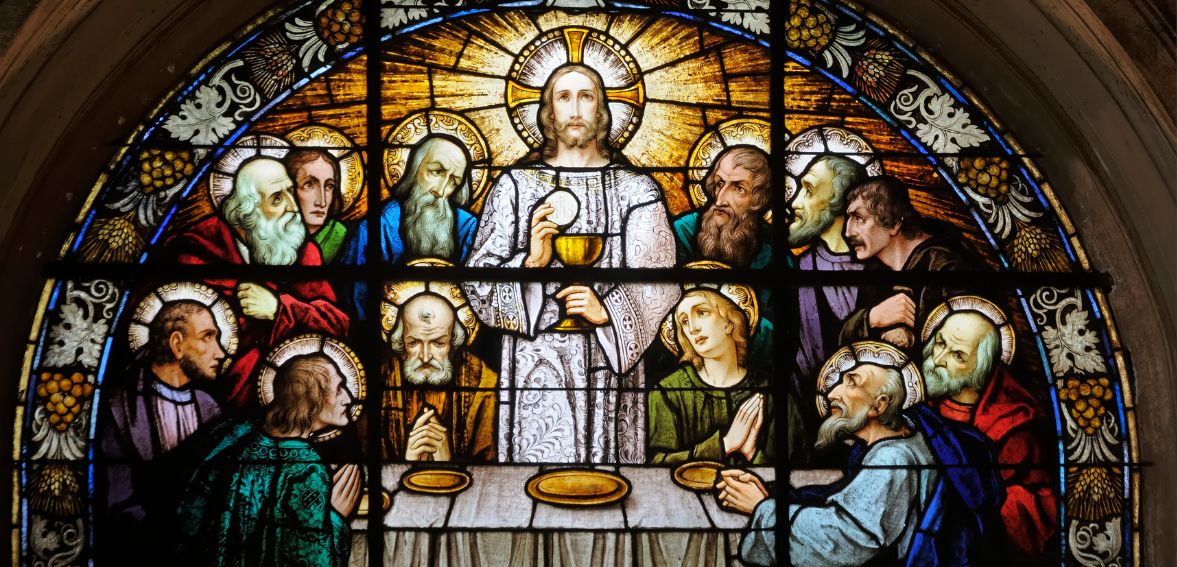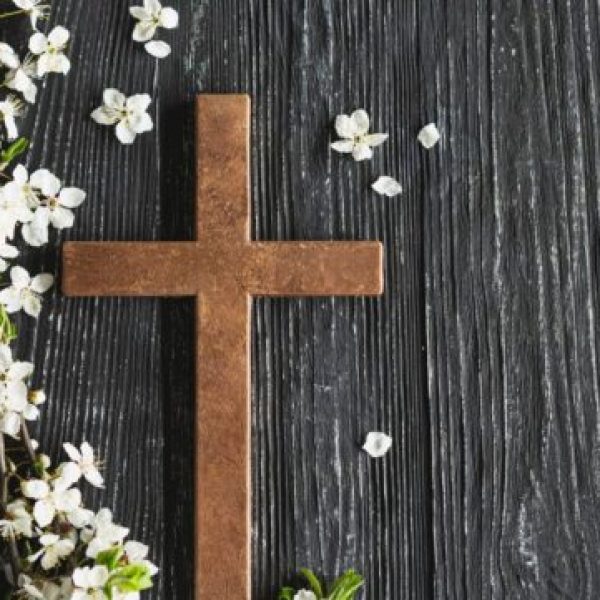The olive tree has long symbolized life, peace, and resilience. It is found in many cultures worldwide, with its roots stretching back thousands of years. From the ancient Greeks to modern-day Italy, this magnificent tree carries such powerful symbolism that it’s inspired countless works of art and literature throughout history.
Olive trees have been present since Biblical times; they feature heavily in Christianity and Judaism as symbols of God’s covenant with humanity. This connection between divinity and nature gives them an even more profound meaning than other plants or trees. In addition to being a source of sustenance for people worldwide, olives are also used as ingredients in various products like soap and cooking oil – making them integral to everyday life.
The beauty of the olive tree lies not only in its physical form but also in its ability to endure harsh conditions while still producing fruit year after year. Its wood is strong yet pliable, which makes it ideal for furniture-making; its leaves are thick enough to provide shelter against wind and rain; ultimately, it serves as a reminder that no matter what adversity you may face, there is always hope for renewal if one persists through hardship. So let’s dive deeper into understanding how meaningful the olive tree is!
The olive tree has long symbolized hope, peace, and endurance. For centuries it has stood for more than its beneficial properties – the fruit, oil, shade, and wood harvested from it. Whether in literature, art, mythology, or religion, its symbolism is deeply embedded into human consciousness. But does this powerful imagery make us feel something? Is there any truth to the idea that seeing an olive tree can evoke emotion within us?
Our response to the sight of an olive tree may stem from its physical form – graceful branches extending upwards with evergreen foliage providing shelter beneath them. Perhaps we also associate its longevity with durability; some trees live up to 2000 years!
This could explain why many cultures have used olives to symbolize life after death – signifying faithfulness even in adversity. Or perhaps its symbolic significance lies in our interpretation of the story behind it: how Athena gifted the Athenians a sacred olive tree which had become a source of prosperity and abundance for their people.
Whatever meaning we draw from it, one thing remains certain: The olive tree stands tall with timeless power and grace that continues to captivate us today.
The olive tree symbolizes many things, including strength and resilience. Its history has deep roots that date back to the ancient world. Historically, its significance has been tied to religion, politics, and culture.
- Early civilizations used it as an emblem of peace and prosperity
- The ancient Greeks believed it represented wisdom, fertility, and victory
- In Christianity, it is symbolic of divine providence and abundance
The symbolism associated with the olive tree continues today in literature, art, and popular culture. Many countries worldwide include the olive branch in national flags or official seals. This timeless symbol remains relevant throughout time and across cultures, from the Bible to modern films like “Braveheart”. Therefore, we can see why it has become so deeply entrenched in our history.

The symbolism of the olive tree has been represented in numerous cultures across history. It is estimated that at least five hundred works of art have depicted olive trees as a symbol of peace, prosperity, and fertility.
In Ancient Greece, the olive tree was associated with Athena, the goddess of wisdom and war. The Athenians even brought an olive branch to the Parthenon to show respect for her power. In Judaism, olives represent hope and faithfulness, while Christianity sees them as symbols of abundance and purity.
During World War I, France awarded a medal called ‘L’Olivier de la Victoire’ or ‘Victory Olive Branch’ to soldiers who fought bravely on the front lines.
Additionally, it is said that olive oil plays a vital role in many religious rituals, such as baptism or coronation ceremonies. Furthermore, this oil is used extensively throughout cooking worldwide because it provides several health benefits due to its high concentration of antioxidants and healthy fats.
Therefore, we can conclude that from ancient times until today, the symbolic importance of the olive tree continues to be recognized by multiple civilizations around the globe.
The symbolism of the olive tree is deeply embedded in various religions and mythologies. In Christianity, Judaism, Islam, and other Abrahamic faiths, it symbolizes peace and love as a reminder of God’s divine grace.
In Greek mythology, the Olympian Gods were believed to have been born from an olive tree. Additionally, many cultures use the olive tree to represent abundance and fertility due to its long lifespan and ability to bear fruit for centuries.
| Symbolism | Religion/Mythology |
|---|---|
| Peace & Love | Abrahamic Religions |
| Olympian Gods | Greek Mythology |
| Abundance & Fertility | Various Cultures |
In addition to its religious significance, the olive tree has become a symbol of resilience and victory in times of struggle. It was used by ancient Greeks during wartime to represent strength when armies marched into battle carrying branches from the trees; these same branches were later celebrated after battles had ended with victorious warriors being crowned with them.
This small but mighty plant’s power continues even today; it is an inspiring reminder that no matter how difficult life may be, we can always find solace within ourselves if we stay strong like the resilient olive tree.
The olive tree has been a powerful symbol in literature since ancient times. Its use as a metaphor for hope, peace, and bounty can be traced back to the Ancient Greeks and Romans, who used it to evoke themes of immortality and abundance. It’s no surprise that writers have continued to draw on this symbolism throughout history.
In Homer’s Odyssey, the olive branch is seen as an omen of salvation when Odysseus washes ashore after his long journey home from Troy. In John Steinbeck’s The Grapes Of Wrath, olives are often found growing along the roadside, serving as symbols of resilience in the face of hardship.
This theme carries through into modern works such as Toni Morrison’s Beloved, where an old oak tree with its roots reaching down into soil filled with the bones of enslaved people serves as a reminder that even in suffering, there is still hope.
This literary meaning associated with the olive tree captures its enduring message: despite adversity, we can find strength and solace in nature. As such, it remains one of the most potent symbols in Western culture today.

The olive tree has long been used in many cultures to symbolize peace, wisdom, and strength. In visual imagery, the olive tree is often depicted with its branches reaching up toward the sky and its roots stretching down into the earth. This represents an essential balance between life’s physical and spiritual elements.
In some works of art, such as paintings or photographs, the olive tree is shown surrounded by lush foliage meant to portray abundance and fertility. The soft green leaves on an otherwise barren landscape can also be seen as a sign of hope for something better ahead.
Other artists emphasize the hardy resilience of the plant by depicting it against harsh backdrops such as rocky terrain or scorched deserts; this demonstrates that even in difficult times, one can still have faith in their perseverance over adversity.
Finally, images of olive trees evoke feelings of serenity and stability due to their slow growth rate, giving them a sense of timelessness and longevity. This is further highlighted by their symbolic association with immortality, rebirth, and divine favor making them powerful symbols throughout history that are still resonant today.
It is easy to overlook the political and social implications of the symbolism of the olive tree. However, this would be a mistake as the symbolic meanings are deeply connected to politics and societal values.
The first implication lies in its use by ancient cultures for peace treaties. In Ancient Greece, olive branches were part of an offering between two warring sides after the conflict was finally resolved. The gifts represented a desire for reconciliation, symbolically expressed through their commitment to growing olives together. This could be a metaphor for cooperation, understanding, and respect between different people or groups.
Similarly, in Ancient Rome, victorious generals decorated their triumphal chariots with laurel wreaths made from olive leaves – again showing that even in times of strife, it was possible to find common ground through the power of nature’s beauty and bounty. By emphasizing these positive aspects rather than focusing on differences and division, the symbolism of the olive tree further encourages us to strive toward peaceful coexistence.
These historical examples show how powerful symbols like those associated with the olive tree have endured over time to remind us about our shared humanity – regardless of where we come from or what beliefs we hold dear. As such, they remain an essential source of inspiration today for building bridges between diverse peoples throughout history and worldwide.
Today, the olive tree is often seen as a symbol of hope and peace. It is used in art, literature, and tattoos to represent these qualities. It has become an icon for many different contemporary causes and ideologies.
- The olive branch is featured prominently on flags worldwide, such as the flag of Israel and Lebanon.
- Its leaves have been associated with victory or triumph, representing courage and resilience in difficult circumstances.
- Olive trees are planted ceremonially at sites of tragedy or conflict to signify renewal and healing between nations or groups once divided by war or hatred.
- Many refer to its use in religious ceremonies like baptism rites and funerals which demonstrate its significance within spiritual rituals across cultures worldwide.
The symbolism behind this ancient species continues to be relevant today because it speaks powerfully about our collective experience as human beings – individually and collectively: overcoming adversity through strength, resilience, cooperation, compassion, acceptance, and, most importantly – hope.

The olive tree has long been a symbol of peace and harmony worldwide for centuries. Its leaves have even appeared in many works of art, from ancient sculptures to modern paintings. In both religious contexts and popular culture, the olive tree is seen as an emblem of hope and prosperity.
At its most superficial level, the olive tree represents peace due to its abundance of fruits – olives are often used in cooking or pressed into oil, providing sustenance and nourishment that can be shared with others. Additionally, many associate it with love because when two branches come together, they form a heart shape. The presence of this powerful symbol serves as a reminder of how important it is to care for one another during times of conflict or hardship.
The symbolism behind the olive tree stretches far beyond just physical representation; it also speaks to spiritual aspects such as forgiveness and reconciliation. For example, in certain cultures, planting an olive branch near your home is believed to bring good luck and ward off any negative energies surrounding you.
This simple act reinforces the idea that no matter what life throws at us, we should strive to understand each other better so we can all live harmoniously together.
By recognizing these values associated with the olive tree, we can use them to help guide our actions in the future and promote peaceful dialogue between different groups regardless of their backgrounds or beliefs. It’s only through practices like these that we’ll indeed be able to create a society where everyone feels safe, respected, and accepted for who they are.
The olive tree has long been a symbol of strength, both physically and spiritually. It is an evergreen with thick foliage that stands tall against the elements while providing shelter to other plants and animals beneath its branches. The wood is strong enough for furniture or construction and is resistant to decay even when submerged in water. Its fruit provides sustenance and nutrition, which further adds to its symbolism of strength.
In ancient Greece, the olive branch was seen as a sign of power and victory, often awarded to winners at the Olympic games. During wartime, soldiers would carry sprigs of olives on their armor to show courage and determination in battle. In literature, such as Homer’s Odyssey, the olive tree represents wisdom and abundance through its connection with Athena, the goddess of knowledge and warcraft.
This symbolic meaning continues today: many countries have adopted the olive branch as a national symbol to represent peace and resilience during difficult times. Olive wreaths are also given out at weddings as a reminder of love’s endurance against all odds – just like how the sturdy nature symbolizes strength despite adversity.
The traditional rituals associated with the olive tree are steeped in symbolism and lore. From ancient Rome to modern Greece, this powerful symbol of peace has been utilized in various ways throughout history. Here are some everyday rituals that have been used to honor the olive tree:
- Crowning – In ancient times, an olive wreath was placed on the head of victorious athletes or warriors as a sign of strength and perseverance. This ritual is still practiced today, especially among members of the military returning home from deployment.
- Giving Offerings – The Greeks believed that giving offerings to their gods would bring them good fortune and health. Olive oil, olives, and branches were often given as tokens of appreciation for divine protection.
- Celebrations – Ancient Greeks also held festivals dedicated to honoring the olive tree’s life-sustaining properties, such as fertility and abundance, by decorating it with laurel leaves, flowers, ribbons, and candles. These festivities remain popular today, with many communities celebrating special days devoted to their continued importance in society.
The symbolism behind these traditional rituals speaks volumes about how we view nature’s gifts in our lives today; they remind us that even small acts can be meaningful when done out of love and respect for others or ourselves. As long as people continue to recognize the power of symbols like the olive tree, these age-old customs will live on for generations.
The olive tree has been a symbol of peace, strength, and prosperity for centuries. It is a reminder that hope can still be found even in the darkest times. Its roots reach deep into the earth, connecting us to our history, and its branches stretch up toward the sky, reminding us of our potential.
It’s no wonder many people use this majestic tree as home decor. Whether it’s an artificial plant or a real one planted outside, having an olive tree in your space brings beauty, serenity, and life to any room. Furthermore, traditional rituals associated with the olive tree make it even more special – from planting them during marriage ceremonies to using its leaves for healing purposes.
Ultimately, the symbolism behind the olive tree is powerful and inspiring; always encouraging us to strive for inner peace, courage, and resilience despite what life throws at us. No matter how dark things may seem at first glance – just like the olives – joy and abundance will eventually come if we keep reaching out for them.













